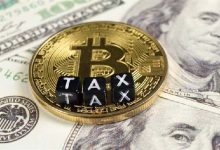SEC v. Ripple: Key Details from $2 Billion Motion for Remedies

The U.S. Securities and Exchange Commission has requested various forms of relief, including injunctive relief, disgorgement of profits, and civil penalties.
They argue that such actions are necessary to deter Ripple and others from similar violations in the future.
Moreover, this would compensate for the harm caused to investors and the markets. “To deter Ripple and others from additional violations of the securities laws, to deprive Ripple of its ill-gotten gains, and in recognition of the harm caused to the markets, the SEC asks this Court to issue a final judgment providing for the relief set forth above and herein,” the SEC said.
The SEC has outlined several factors supporting the imposition of injunctions and penalties. These include Ripple’s violation history, the reckless nature of their conduct, and the fact that their violations were not isolated incidents. According to the much-feared regulator, these factors collectively justify the need for regulatory action.
The SEC argues for the disgorgement of Ripple’s profits obtained from the illegal sales of XRP. They contend that Ripple should not benefit from its wrongdoing. “Ripple received almost a billion dollars from its illegal sales of XRP via contracts that the Court determined violated Section 5,” the SEC noted.
At the same time, a significant civil penalty against Ripple would serve as a deterrent to both the company and others in the industry.
Ripple’s response
As reported by U.Today, Stuart Alderoty, Ripple’s chief lawyer. Alderoty slammed the SEC for its alleged intent to punish and intimidate Ripple and the cryptocurrency industry.
Ripple CEO Brad Garlinghouse has also condemned what he sees as regulatory overreach. He has pointed to alleged misconduct by the SEC under Gary Gensler’s leadership.
It is worth noting that Ripple plans to file its response in April.




 Bitcoin
Bitcoin  Ethereum
Ethereum  Tether
Tether  Dogecoin
Dogecoin  USDC
USDC  Cardano
Cardano  TRON
TRON  Chainlink
Chainlink  Stellar
Stellar  Hedera
Hedera  Bitcoin Cash
Bitcoin Cash  LEO Token
LEO Token  Litecoin
Litecoin  Cronos
Cronos  Ethereum Classic
Ethereum Classic  Monero
Monero  Dai
Dai  Algorand
Algorand  OKB
OKB  Cosmos Hub
Cosmos Hub  Stacks
Stacks  Theta Network
Theta Network  Gate
Gate  Maker
Maker  KuCoin
KuCoin  Tezos
Tezos  IOTA
IOTA  NEO
NEO  Polygon
Polygon  Zcash
Zcash  Synthetix Network
Synthetix Network  Tether Gold
Tether Gold  TrueUSD
TrueUSD  Dash
Dash  Holo
Holo  Zilliqa
Zilliqa  Enjin Coin
Enjin Coin  0x Protocol
0x Protocol  Qtum
Qtum  Basic Attention
Basic Attention  Siacoin
Siacoin  Ravencoin
Ravencoin  Bitcoin Gold
Bitcoin Gold  Decred
Decred  NEM
NEM  Ontology
Ontology  DigiByte
DigiByte  Status
Status  Nano
Nano  Hive
Hive  Huobi
Huobi  Lisk
Lisk  Waves
Waves  Steem
Steem  Numeraire
Numeraire  Pax Dollar
Pax Dollar  BUSD
BUSD  OMG Network
OMG Network  Ren
Ren  Bitcoin Diamond
Bitcoin Diamond  Bytom
Bytom